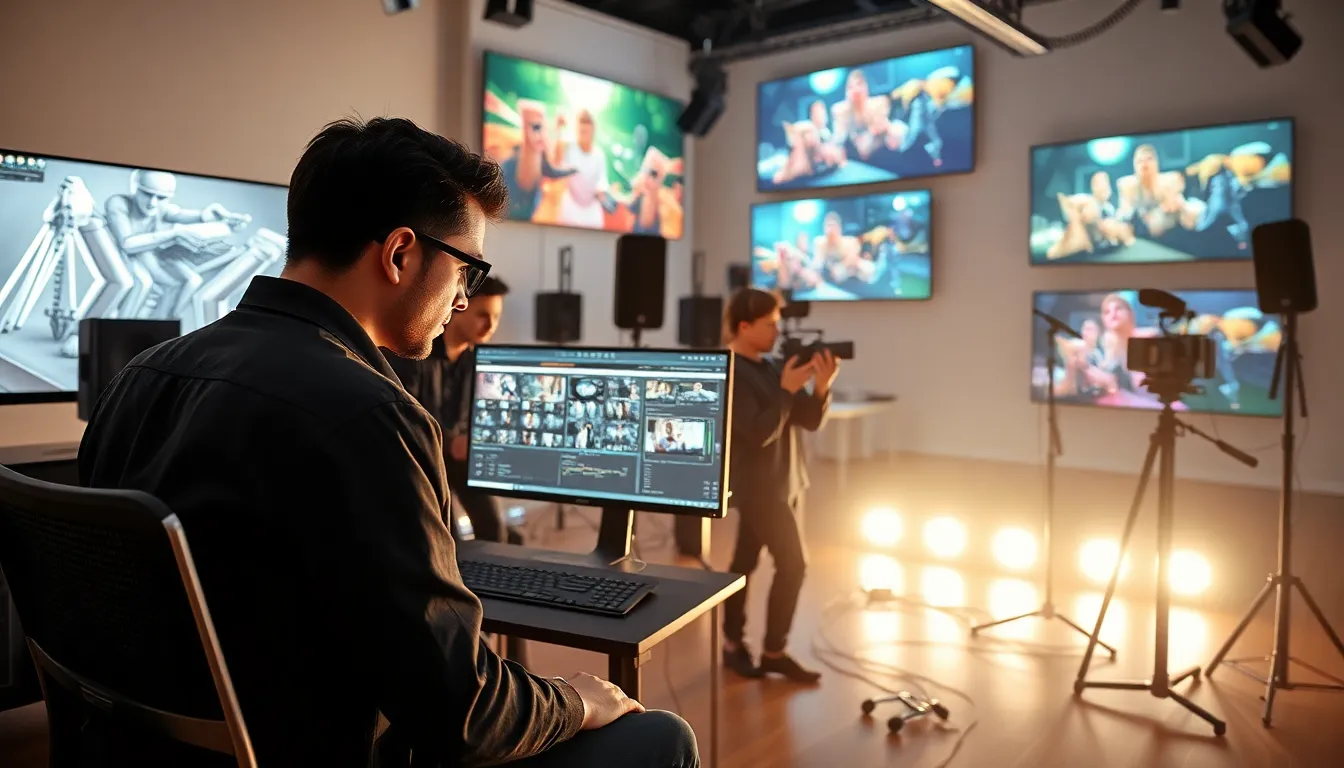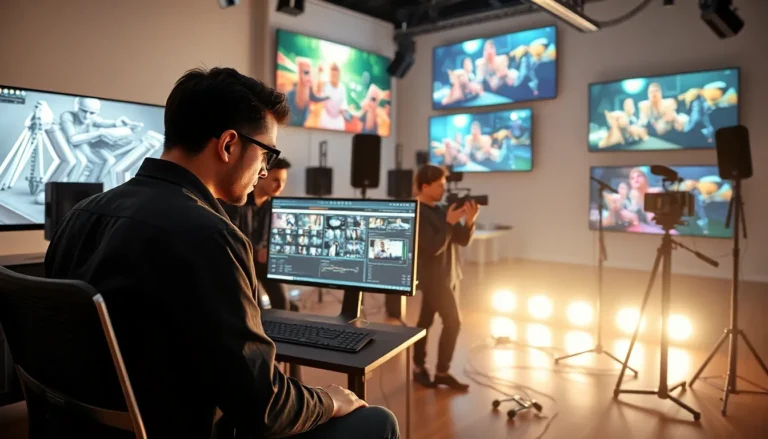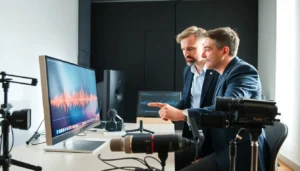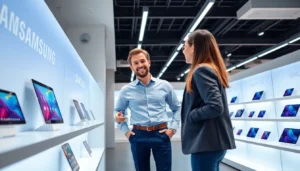In a world that spins faster than a DJ dropping the bass at a rave, the realms of arts, audio and video technology, and communications have merged into a vibrant tapestry of creativity. Picture this: artists using cutting-edge technology to transform a blank canvas or a blank screen into a sensory explosion. How did we get here? Well, grab your headphones and let’s jump into this captivating journey where technology doesn’t just support art: it elevates it to stunning new heights.
Table of Contents
ToggleThe Intersection of Arts and Technology

Historical Context and Evolution
The relationship between arts and technology is as old as time itself. Think of the cavemen painting on walls thousands of years ago or Beethoven composing symphonies on what were then revolutionary instruments. Fast forward to today, technology is not merely a tool: it’s an extension of artistic expression. From the invention of photography in the 19th century to the digital proliferation of art in the 21st, the evolution has been dizzying. Artists have harnessed technology to explore new mediums, reimagine traditional forms, and reach audiences across the globe.
Current Trends in Artistic Expression
Currently, one cannot overlook how technology influences contemporary art. Artists use software programs to create intricate digital artwork or even craft immersive installations that challenge viewers’ perceptions. Events like digital art fairs and NFTs (non-fungible tokens) are reshaping how art is monetized and consumed. Besides, technologies like augmented reality allow art to escape the confines of a gallery, engaging viewers in public spaces and personal environments, inviting them to experience art in ways once thought impossible.
Audio/Video Technology’s Role in Arts
Innovations in Audio Technology
Audio technology has experienced a renaissance of its own. It’s not just about sound quality anymore: it’s about experience. Innovations like spatial audio and advanced mixing technologies have transformed music production and live performances. Artists now deploy tools that enhance soundscapes, pulling listeners into a nearly immersive environment. Also, apps and platforms allow creators to produce music remotely, collaborating with other artists across continents.
Advancements in Video Production
Video production technology has broken barriers, making it possible for anyone with a smartphone to become a content creator. From editing software like Adobe Premiere Pro to platforms like YouTube and TikTok, the visual storytelling landscape is ever-evolving. Techniques such as 4K resolution, drones for aerial videography, and real-time effects have democratized access to high-quality production. It’s a golden age for filmmakers looking to share their narratives with the world.
Impact of Digital Communication on Arts
Social Media and Artistic Visibility
Social media has been a game changer for artists, equipping them with the tools to amplify their voices and reach wider audiences. Platforms like Instagram and Twitter enable creators to share their work immediately, gathering feedback and building communities. The arts are no longer confined to galleries or concert halls: they’re everywhere, from hashtags to stories. This new visibility fosters a culture of collaboration and discovery, leveling the playing field for emerging artists who can now compete for attention alongside established names.
Virtual Reality and Immersive Experiences
Virtual reality (VR) is the latest frontier in the artistic experience. Artists create spaces that transport users into their imaginations, allowing for an interactive experience rather than passive viewing. Museums are incorporating VR installations, which invite visitors to engage with art in thrilling new ways. Imagine walking through a Van Gogh painting or attending a live performance from your living room couch, VR blurs the lines between artist and audience, creating a shared space for creativity.
Challenges and Considerations
Ethical Implications in Digital Art
As exciting as the intersection of arts and technology is, it’s not without its challenges. Ethical implications loom large, especially about copyright and ownership in digital art. The rise of AI-generated art and the use of existing works in new mediums raise questions about attribution and compensation. Artists grapple with how to maintain their creative integrity in a landscape where technology can easily replicate or manipulate their work. Navigating this ethical minefield is crucial for the future of the creative industry.
The Future of Arts and Communication Technologies
Emerging Technologies to Watch
Looking ahead, the future of arts and communication technologies brims with exciting possibilities. Artificial intelligence is proving to be a powerful ally, assisting artists in creating complex works or even generating entirely new concepts. Also, developments in blockchain technology promise to revolutionize how artists protect their rights and monetize their art. Other innovations like holography and wearable art are set to further enrich artistic expression.
Potential Trends Shaping the Future
As these technologies evolve, trends such as art in the metaverse and more focus on interactive experiences will likely gain traction. Artists are embracing collaboration with technologists to explore unchartered territories. This synergy will likely lead to even more innovative forms of expression, enabling creators to push boundaries. The merger of technology with the arts appears destined to continue forging bold new paths.







